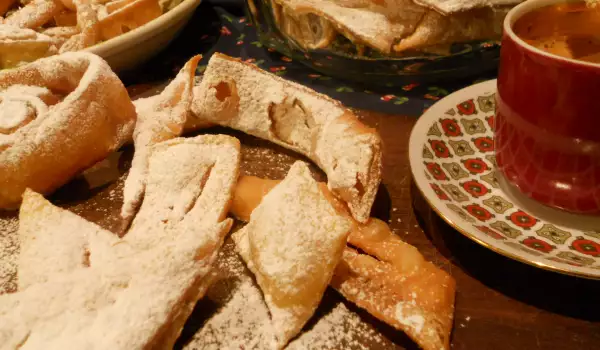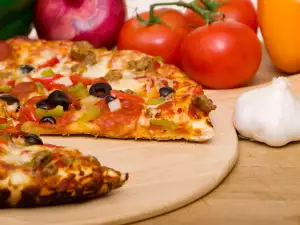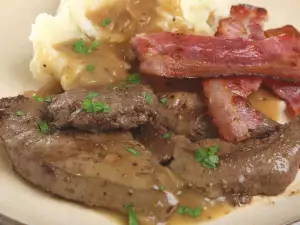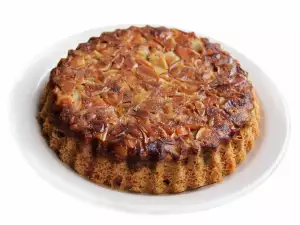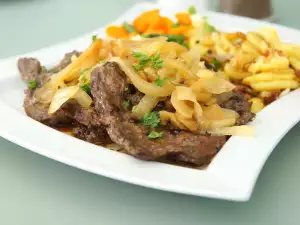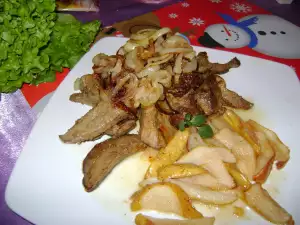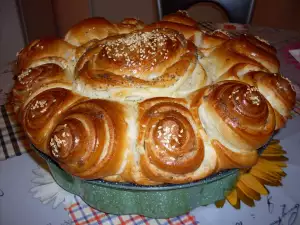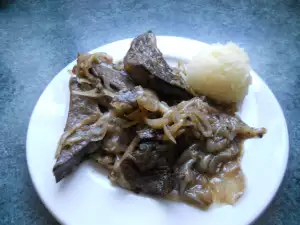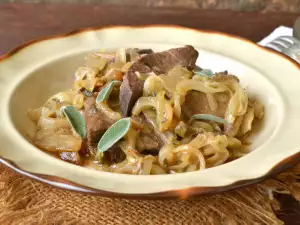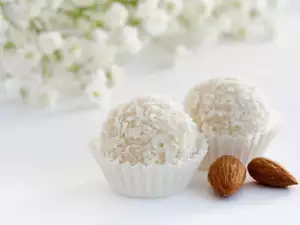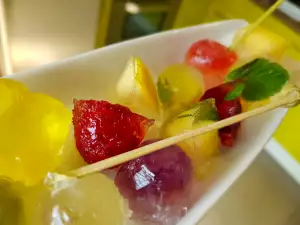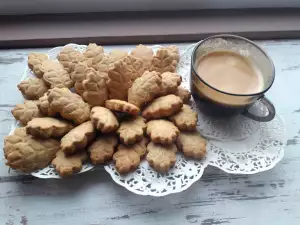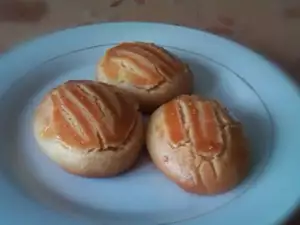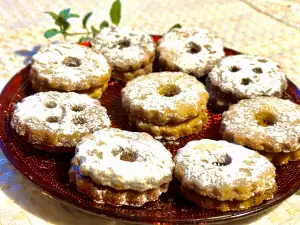How to make
What you need:
Deep pan with enough oil for oil bath.
Culinary thermometer for measuring fat temperature.
Cutter, ruler.
Preparation:
In a bowl with a fork beat the egg, add a pinch of salt, sugar, milk, water, 3 tsp. rum liqueur, grated orange peel and melted butter.
Pour the flour into a bowl and the whole liquid mixture on top. Knead the dough and if it's too soft you can add a handful of flour, but the recipe is completely accurate and I didn't have to. Form a ball of dough, wrap in foil and leave it for 30 minutes at room temperature.
The dough is divided into two parts for convenience. Each part is rolled out thinly, no more than 2 mm. It is quite possible to use a pasta rolling machine, but since it is very pleasant to work with, I did not use one. If it sticks a little during rolling, it is sprinkled with flour.
Once rolled out into the required thickness, it is leveled out on all sides with a ruler and cutter. It should be 12″ (30 cm) in length. 12x1.2″ (30x3 cm) strips are cut with the cutter. With a long stick, a wooden skewer, which is placed at the base of the strip, is rolled up.
The rolled roll is placed in the heated fat, which is up to 320°F (160°C) and the wooden skewer is gently shaken in a rotating motion and in order to open up the roll slightly, the skewer is removed. During frying, the strips open and this is the goal, to make them look like open spirals. Fry, until they aquire a golden color. Remove and place them onto kitchen paper.
I rolled out the rest of the dough very thinly again, but I didn't use a wooden skewer here and after I cut the strips, I cut the dough into irregular rectangles, rhombuses. It is pierced two or three times with a fork and cut in the middle.
They are placed, as well as the rolls (up to 4-5 pcs. no more at once), at 320°F (160°C) in fat. At first, the butter sweets sink into the fat, then they rise and after a short time they are ready to be removed. Fry, until they aquire a golden color on both sides.
When preparing the carnival sweets, it is important for them to form bubbles during frying, which I will try to show in the photo gallery.
The Venice Carnival runs from mid-February to early March. It is distributed mainly in Catholic countries and is associated mainly with the beginning of Easter fasting. Its roots go back to pre-Christian history.
An old ritual, which has survived to this day, to banish winter and the beginning of spring holidays.
The carnival is characterized by large processions with characteristic costumes and carnival figures. The most famous are in Venice, Rio de Janeiro, Cologne and all countries at that time show their most famous street sweets.
